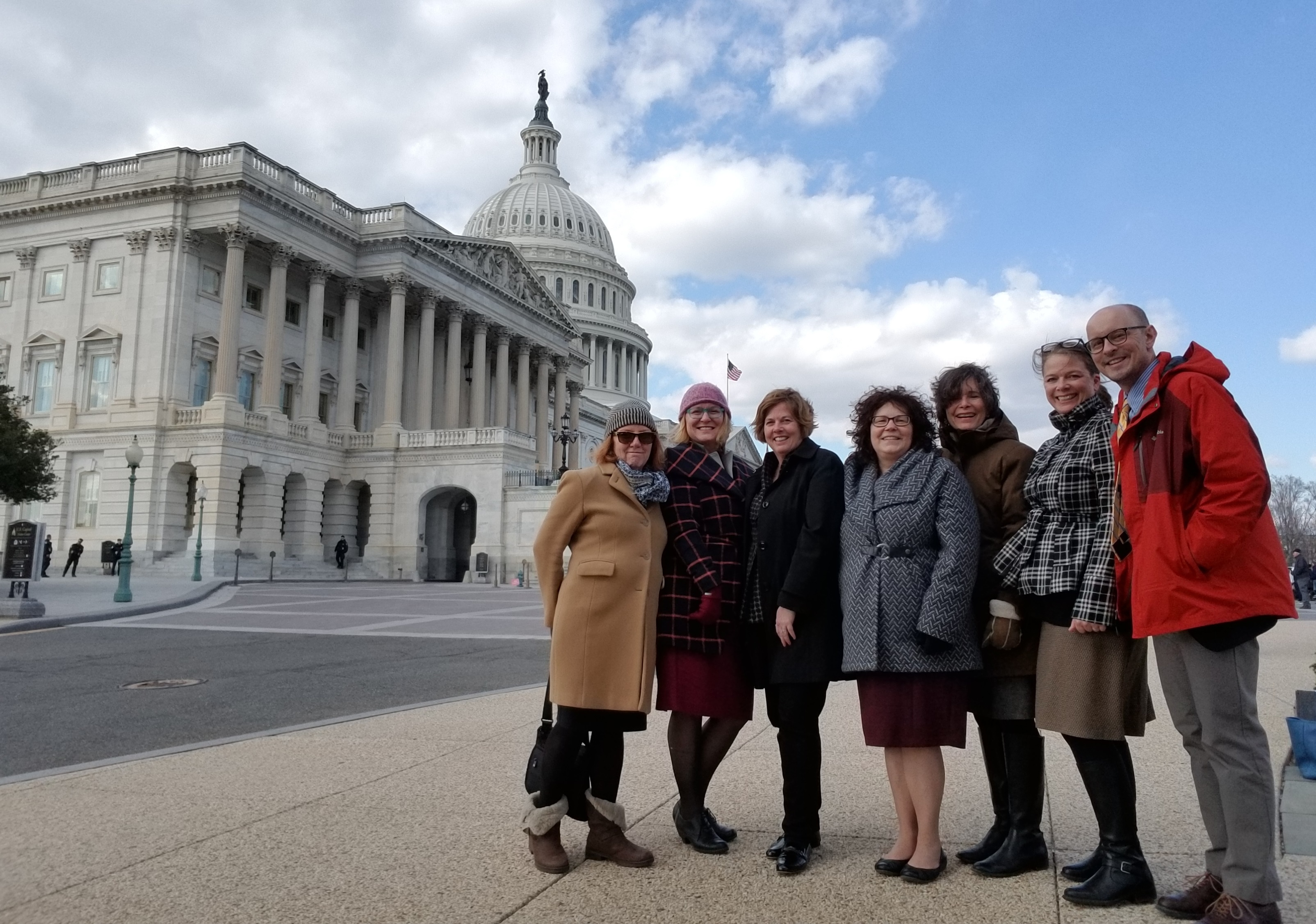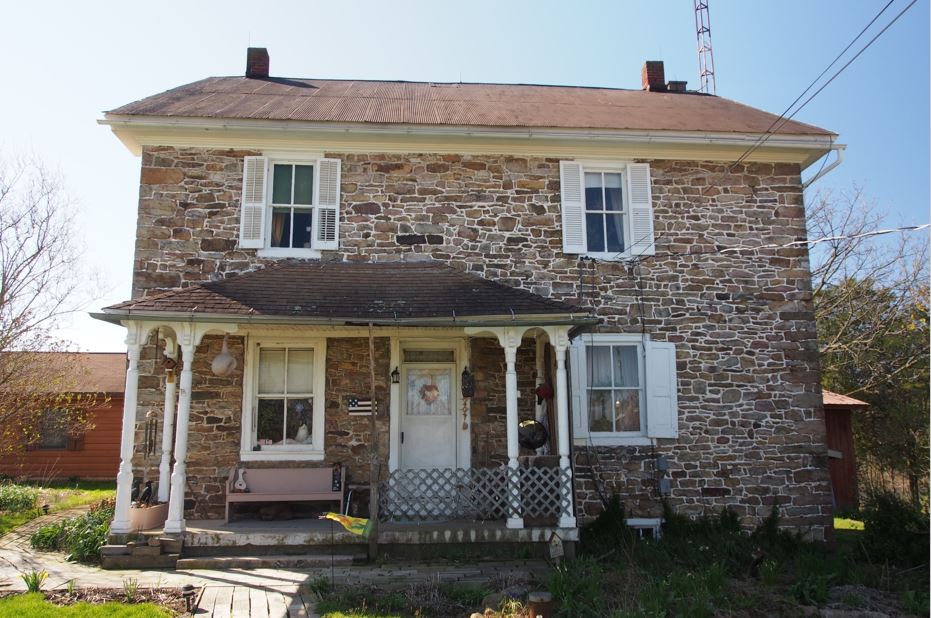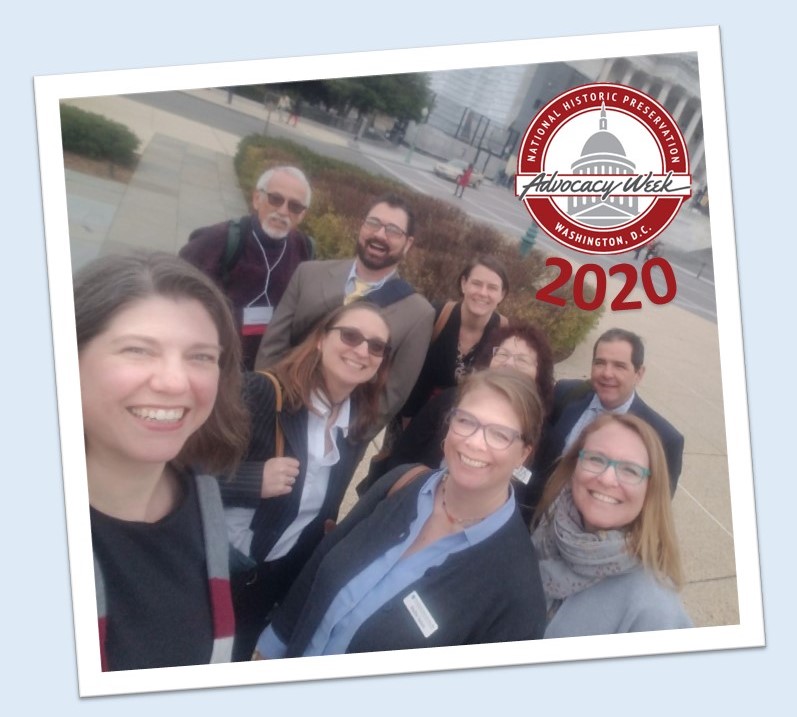Every year in March, State Historic Preservation offices and preservation advocates from across the country travel to Washington, D.C. for National Historic Preservation Advocacy Week. The Pennsylvania delegation was there to be a part of it.
What is Advocacy Week?
Advocacy Week, as you may recall from this post and this post, is one of big preservation events of the year. Preservation Action and the National Conference of State Historic Preservation Officers (NCSHPO) organize Advocacy Week each year, bringing over 250 preservationists to Washington, DC to promote sound federal preservation policy and programs. The first day of Advocacy Week typically includes in-depth training, policy briefings, and forums from an array of preservation and policy professionals. The second day is when things really start to get fun!

Preservation Advocacy Week logo.
Pennsylvania’s Delegation
This year’s PA SHPO team included me, Andrea MacDonald, and Cory Kegerise. Executive Director Mindy Crawford and Board member Sandy Rosenberg joined us from Preservation PA. Brenda Barrett, a long-time Advocacy Week attendee and editor of the Living Landscape Observer, and Cindy Hamilton, representing the Historic Tax Credit Coalition, also joined the group.

PA’s delegation in March 2018. From left: Brenda Barrett, Andrea MacDonald, Cindy Hamilton, Mindy Crawford, Sandy Rosenberg, me, and Cory Kegerise.
Walking Capitol Hill
The second day of Advocacy Week is devoted to visits with Pennsylvania’s Representatives and Senators. We weren’t quite sure how this year would go given the number of Congressman retiring this year and the uncertainly of the new congressional district map. Divided into three teams, we met with staff from 13 offices (12 Representatives and 1 Senator) and walked miles (not really, but it felt like it!) in the tunnels between the Cannon, Longworth, and Rayburn House Office Buildings and across the Hill to the Russell Senate Office Building.
I am happy to report that all of our visits were a huge success! We had the chance to meet with new staff and old friends to talk about historic preservation and why it matters.
So what happens at these meetings?
The meetings are typically 15 minutes long and can happen anywhere – in a Congressman’s office or the hallway. Our goal is always to create more awareness and, if we’re lucky, a new relationship. We provide a folder of information for the meeting, which includes the “Your Guide to the PA State Historic Preservation Office,” information sheets on preservation programs and issues, and our contact information. This year, we were also able to give the people we met with an on-the-spot thank you card for taking the time to meet with us.
Videos steal the show
One of the ways that we have found to communicate the importance of preservation, especially to the average Joe, is through videos. These steal the show. We can talk about the need to support historic preservation all day long, but these video testimonials bring preservation to life.
PHMC’s video and social media wizard, Sean Adkins, produced three new videos for us this year! You might remember that last year our videos focused on the benefit and necessity of the historic tax credit. In this year’s videos, we wanted to show the broad range of preservation activities that the Historic Preservation Fund supports. Take a look!
- City of Lancaster: This video showcases the preservation work happening in Lancaster right now. The city is a CLG (certified local government), is home to some great historic tax credit and grant projects, and has a local and National Register historic districts. Former PA SHPO-er Jeremy Young even makes an appearance!
- Spangler Farm: This testimonial follows the Noll family as they take you on a tour of their farm, the former Spangler Farm, in Union County. Listing in the National Register is a tremendous source of pride for them, and their efforts will help preserve this early – and relatively intact – farmstead. They were so happy they were listed last year that they held a party!
- Brandywine Battlefield: Brandywine Battlefield benefits from federal grants, principally from the American Battlefield Protection Program, an involved Task Force, and support from county planning offices and the public.

The George Christian and Anna Catherine Spangler Farm in Union County was listed in August 2016.
You can check out the videos through the above links or visit PHMC’s YouTube channel.
Do we make a difference?
Yes. I think our time in Washington networking with other SHPOs and meeting with our federal representatives do make a difference. Congressional staffers hear from people in their districts regularly and it’s important for them to consider us a resource for them and their constituents when preservation issues arise.





Recent Comments